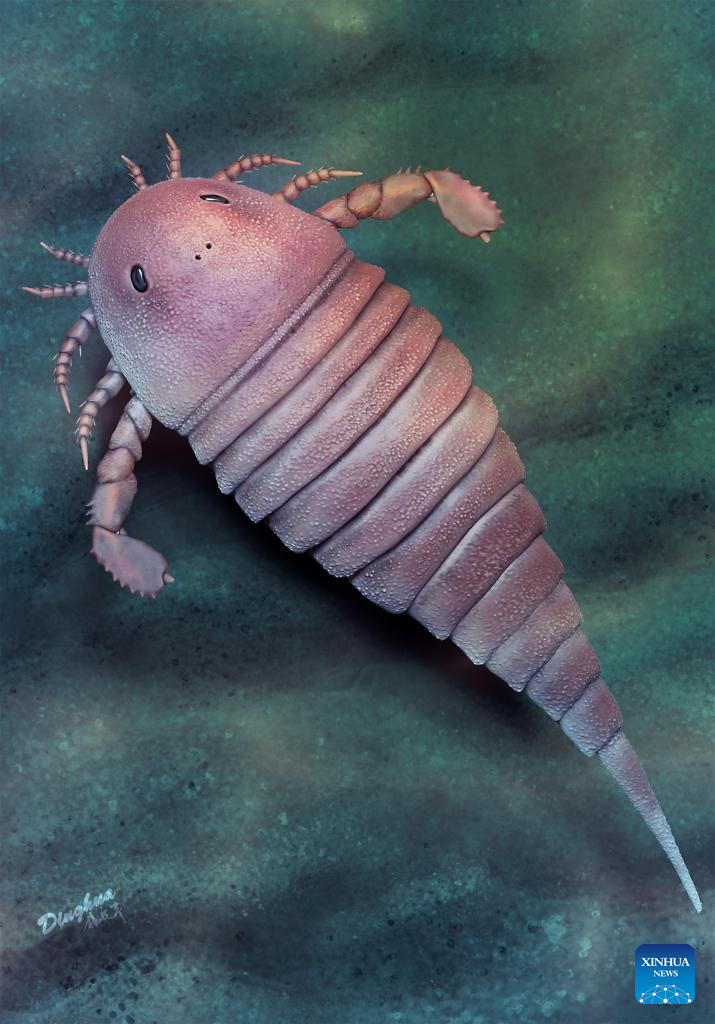
This picture provided by the Nanjing Institute of Geology and Palaeontology of the Chinese Academy of Sciences shows the restored image of a sea scorpion based on some 450-million-year-old fossils. Researchers from China and the United Kingdom have discovered fossils of a previously unknown eurypterid, more commonly referred to as a sea scorpion, dating back 450 million years to the Ordovician period in east China's Zhejiang Province, the earliest recorded in the country. A joint working group led by the Nanjing Institute of Geology and Palaeontology reported the rare eurypterid from Wenchang Formation of Anji County. (Xinhua)
Researchers from China and the United Kingdom have discovered fossils of a previously unknown eurypterid, more commonly referred to as a sea scorpion, dating back 450 million years to the Ordovician period in east China's Zhejiang Province, the earliest recorded in the country.
A joint working group led by the Nanjing Institute of Geology and Palaeontology, Chinese Academy of Sciences, reported the rare eurypterid from Wenchang Formation of Anji County.
The study was published in the Journal of Paleontology earlier this month.
Having a round head with a parabolic shell, the 15-cm-long species looks cuter than previously found eurypterid species, said Wang Han, a major participant in the research and a Ph.D. student with the institute.
However, it was actually a fierce ocean predator, Wang added.
Zhang Yuandong, a researcher with the institute and also a member of the research team, said the eurypterid found in Anji is the earliest recorded in China, shedding light on the early evolution of eurypterids. Fossils of other marine life found in the deep sea, such as sponges, were also discovered.
The emergence of new materials and the progress of paleontological research methods will provide the basis for further comprehensive studies of Chinese eurypterids, said Zhang. (Xinhua)
Download:
